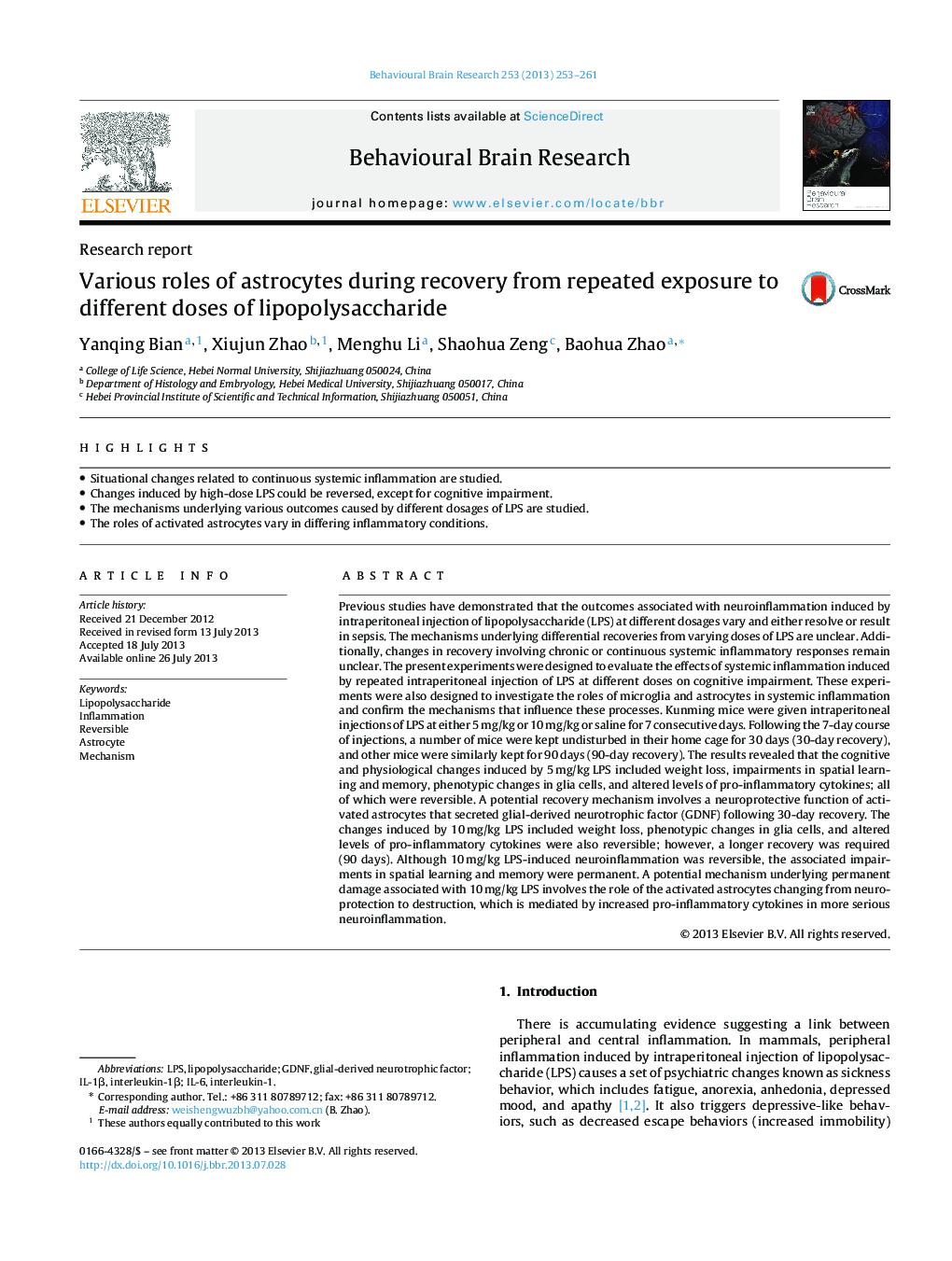| کد مقاله | کد نشریه | سال انتشار | مقاله انگلیسی | نسخه تمام متن |
|---|---|---|---|---|
| 6258682 | 1612979 | 2013 | 9 صفحه PDF | دانلود رایگان |
- Situational changes related to continuous systemic inflammation are studied.
- Changes induced by high-dose LPS could be reversed, except for cognitive impairment.
- The mechanisms underlying various outcomes caused by different dosages of LPS are studied.
- The roles of activated astrocytes vary in differing inflammatory conditions.
Previous studies have demonstrated that the outcomes associated with neuroinflammation induced by intraperitoneal injection of lipopolysaccharide (LPS) at different dosages vary and either resolve or result in sepsis. The mechanisms underlying differential recoveries from varying doses of LPS are unclear. Additionally, changes in recovery involving chronic or continuous systemic inflammatory responses remain unclear. The present experiments were designed to evaluate the effects of systemic inflammation induced by repeated intraperitoneal injection of LPS at different doses on cognitive impairment. These experiments were also designed to investigate the roles of microglia and astrocytes in systemic inflammation and confirm the mechanisms that influence these processes. Kunming mice were given intraperitoneal injections of LPS at either 5Â mg/kg or 10Â mg/kg or saline for 7 consecutive days. Following the 7-day course of injections, a number of mice were kept undisturbed in their home cage for 30 days (30-day recovery), and other mice were similarly kept for 90 days (90-day recovery). The results revealed that the cognitive and physiological changes induced by 5Â mg/kg LPS included weight loss, impairments in spatial learning and memory, phenotypic changes in glia cells, and altered levels of pro-inflammatory cytokines; all of which were reversible. A potential recovery mechanism involves a neuroprotective function of activated astrocytes that secreted glial-derived neurotrophic factor (GDNF) following 30-day recovery. The changes induced by 10Â mg/kg LPS included weight loss, phenotypic changes in glia cells, and altered levels of pro-inflammatory cytokines were also reversible; however, a longer recovery was required (90 days). Although 10Â mg/kg LPS-induced neuroinflammation was reversible, the associated impairments in spatial learning and memory were permanent. A potential mechanism underlying permanent damage associated with 10Â mg/kg LPS involves the role of the activated astrocytes changing from neuroprotection to destruction, which is mediated by increased pro-inflammatory cytokines in more serious neuroinflammation.
Journal: Behavioural Brain Research - Volume 253, 15 September 2013, Pages 253-261
